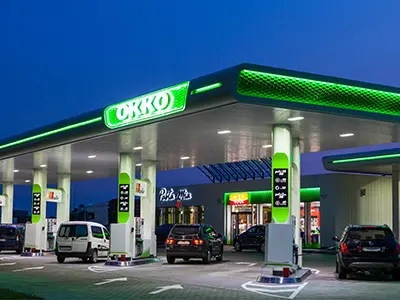
The Ukrainian motor fuel market has demonstrated remarkable adaptation, undergoing a profound transformation that mirrors the overall changes in the country's economy and social sphere since the onset of the full-scale invasion. According to industry experts, including Serhiy Kuyun, Director of the A-95 Consulting Group, the overall market volume has significantly contracted amid active military action, whereas until 2022, it had consistently shown robust annual consumption growth of five percent, driven primarily by diesel fuel. Previously, growth drivers included large-scale capital construction projects and the active development of road infrastructure, which annually added approximately half a million tons of diesel fuel to the overall balance. However, with the onset of the war, this positive trend was abruptly interrupted. The overall picture in recent years consistently shows an initially very deep decline, followed by some recovery and a short period of relative stabilization. Currently, consumer demand is declining again, a natural consequence of the current situation.
According to the expert, the combined gasoline and diesel fuel market has shrunk by approximately sixteen to seventeen percent, while the liquefied gas market has collapsed by nearly half, declining by forty-six percent. The reasons for this significant decline are obvious, including the loss of territory, massive internal and external migration, and the general decline in economic activity during wartime. One of the most significant systemic changes has been Ukraine's complete reorientation toward new sources of imports. While until 2022, the bulk of its fuel was supplied from Russia and Belarus, today the geography of supplies has fundamentally changed, with key partners being Romania, Poland, Germany, and Lithuania. The total number of countries supplying fuel to Ukraine has increased from twenty-four to forty-seven, clearly illustrating the successful transition to a diversified and reliable market free of the previous dangerous dependence on a single dominant source, thereby strengthening overall energy security.
Significant changes have also affected supply logistics, which previously relied almost entirely on rail transport. Today, it has become much more balanced thanks to the active use of sea routes and road transport. Tanker trucks played a key role in overcoming the acute crisis of 2022. The fuel tanker fleet quadrupled from 1,500 to 6,000 units, and new fuel transshipment points were quickly built at rail crossings with the European Union, creating a sustainable multi-channel system. The expert emphasizes that not only the geography of supplies but also the transport structure itself has been diversified, completely eliminating the risks associated with potential disruptions to any single mode of transport. A turning point in market functioning was the government's decision to liberalize prices, which enabled companies to overcome the deep crisis in just three months thanks to open access to fuel imports.
Following market saturation, competition naturally intensified, leading to lower trade margins and a subsequent reduction in the number of importers. However, their number remains significantly higher than in pre-crisis 2021. For example, there are currently 148 diesel fuel importers operating in Ukraine, compared to only 10 in Poland, indicating continued high competition and no signs of market monopolization. Retail prices for gasoline and diesel fuel are showing surprising stability, and the National Bank of Ukraine expects no significant changes until the end of this year, forecasting growth of less than 10 percent due to the sideways trend in oil prices factored into its medium-term forecasts. This is an encouraging sign for consumers. The market's main achievement since 2022 has been the comprehensive diversification of supplies and the acquired ability to quickly adapt to new crisis challenges, which ultimately created an optimal and viable model for a country at war, ensuring its reliable fuel supply.

